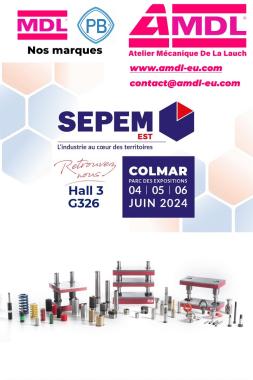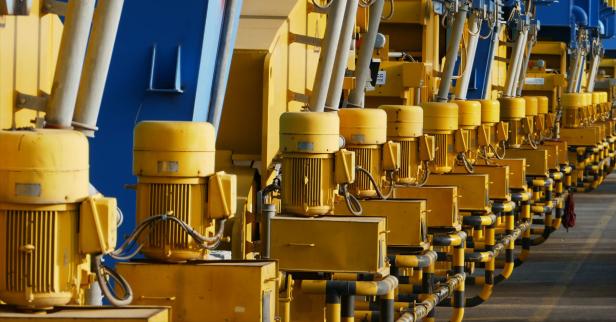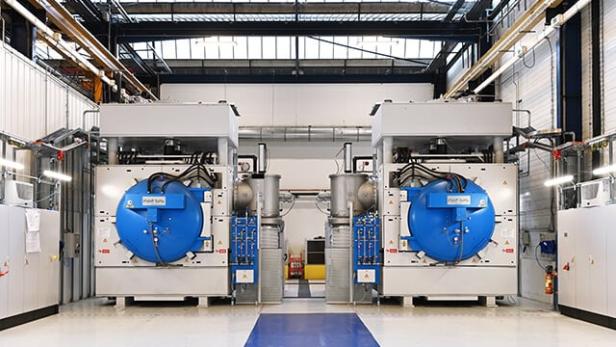Collaborative robots ready to revolutionize industry

Designed to collaborate with humans, the collaborative robot or “cobot” (contraction of the terms “collaborative” and “robot”) is gradually making its way into the industrial world. Distinguished in particular by its small size and its flexibility of use, it could well, in the long term, replace, in certain specific uses, the traditional industrial robot.
A little history
Industrial robotics appeared in the early 1960s. The first robot – named Unimate, from Unimation – installed on an assembly line at a General Motors factory in the United States, was then responsible for picking up parts of metal at very high temperature and move them to cooling baths. " It was a bit like the ancestor of the industrial robot as we know it today, explains Alexandre Bailleul, technical business manager at CETIM (Technical Center for Mechanical Industries), whose objective is to support mechanical industries in their various projects . These were large, expensive robots that were complicated to operate because they required programming skills. They are still used today by companies with high work rates and large masses to transport. »
It was almost fifty years later, in 2008, that the first collaborative robot appeared on the market: the UR5 from Universal Robots. At the time, the three founders of the Danish company – today a leader in the collaborative robotics sector – had identified a need in the industry for automation solutions that were much easier to deploy and implement than classic industrial robotics.
But what is a cobot?
During the 2 nd episode of GI Records, the Global Industrie podcast, Martin Duterte, head of the network of integrator partners and the education program at Universal Robot France, came back to their specificities. “ Cobots are robots that can work in an open space near or in direct collaboration with operators. They are much lighter than conventional industrial robots and integrate all the safety functions that allow this proximity and this collaboration with the operators. They are also much easier to program thanks to an innovative and very intuitive user interface .” Another feature: flexible use, with the ability to deploy and redeploy on several applications in the same manufacturing workshop. Finally, these robots allow very rapid returns on investment: they reduce study time and the deployment of solutions in the workshop.
What uses in industry?
Automotive, electronics, metal, agrifood, pharmaceuticals… We find collaborative robots in many fields. “ They are most often used for pick&place or loading-unloading (machine tending) , says Alexandre Bailleul . It is a simple operation, which does not require many control operations and which saves the operator a painful task. But collaborative robots are capable of performing more complex operations such as surface treatment or control. At CETIM, we participated in the development of an application for an operator who did brazing. The collaborative robot oriented the part according to several angles and several directions, while working very close to the operator thanks to its safety functions. »
In the automotive sector, cobots help operators in the assembly of cars. Their high levels of accuracy and consistency are prized in the electronics industry. In pharmaceuticals or aeronautics, on the other hand, they are used more for quality control. Finally, they can also be the answer to a labor shortage. “ Companies operating in the field of welding have great difficulty recruiting, adds Alexandre Bailleul . Collaborative robotics is also a way to overcome this lack of personnel by having a person with technical robotic skills who will manage his fleet of robots by being able to offload on his robotic colleagues. »
A competitive advantage for VSEs and SMEs
VSEs and SMEs must be competitive in order to respond quickly to the needs of their customers and stand out from their competitors. “ Collaborative robots make it possible to perform many simple activities and assign operators to more useful and value-added missions,” explains Alexandre Bailleul. The latter will thus be able to improve their skills. Instead of having the feeling of being replaced, which could be the case with industrial robotics, they will have a new, more rewarding role within the company. Not to mention that cobots also give the company a more modern image. »
The integration of a collaborative robot is also less expensive – all the same count between 60,000 and 100,000 euros, robot and cell included for simple handling applications – than that of a traditional industrial robot and is therefore more accessible to VSEs and SMEs. In recent years, government development plans facilitating the equipping of companies with robots have also been implemented, such as aid for investment in transformation towards the industry of the future or the Plan France Recovery 2030.
A tool of the future
If the use of collaborative robotics in French industry is still " marginal ", according to Alexandre Bailleul , from vocational high schools to engineering schools, many training establishments are now equipped with collaborative robots to meet the challenges of industry 4.0. Education is also a strategic segment for all manufacturers since these establishments train the operators of tomorrow. “ It's an interesting strategy to provide solutions to schools, confirms Alexandre Bailleul . The general trend is to move towards no code and reduce the skills needed to program the robot. But don't be fooled: it's a long-term application. »
Our other news
See allJoin the largest community of industrial suppliers
- Helping you with your ongoing technology watch
- Provide you with detailed supplier statistics
- Give you international visibility
Discover the largest catalogue of industrial products on the market
- To offer you the best catalogue of industrial products on the market
- To guarantee you a 100% secure platform
- Enable you to have live remote exchanges


 Français
Français







